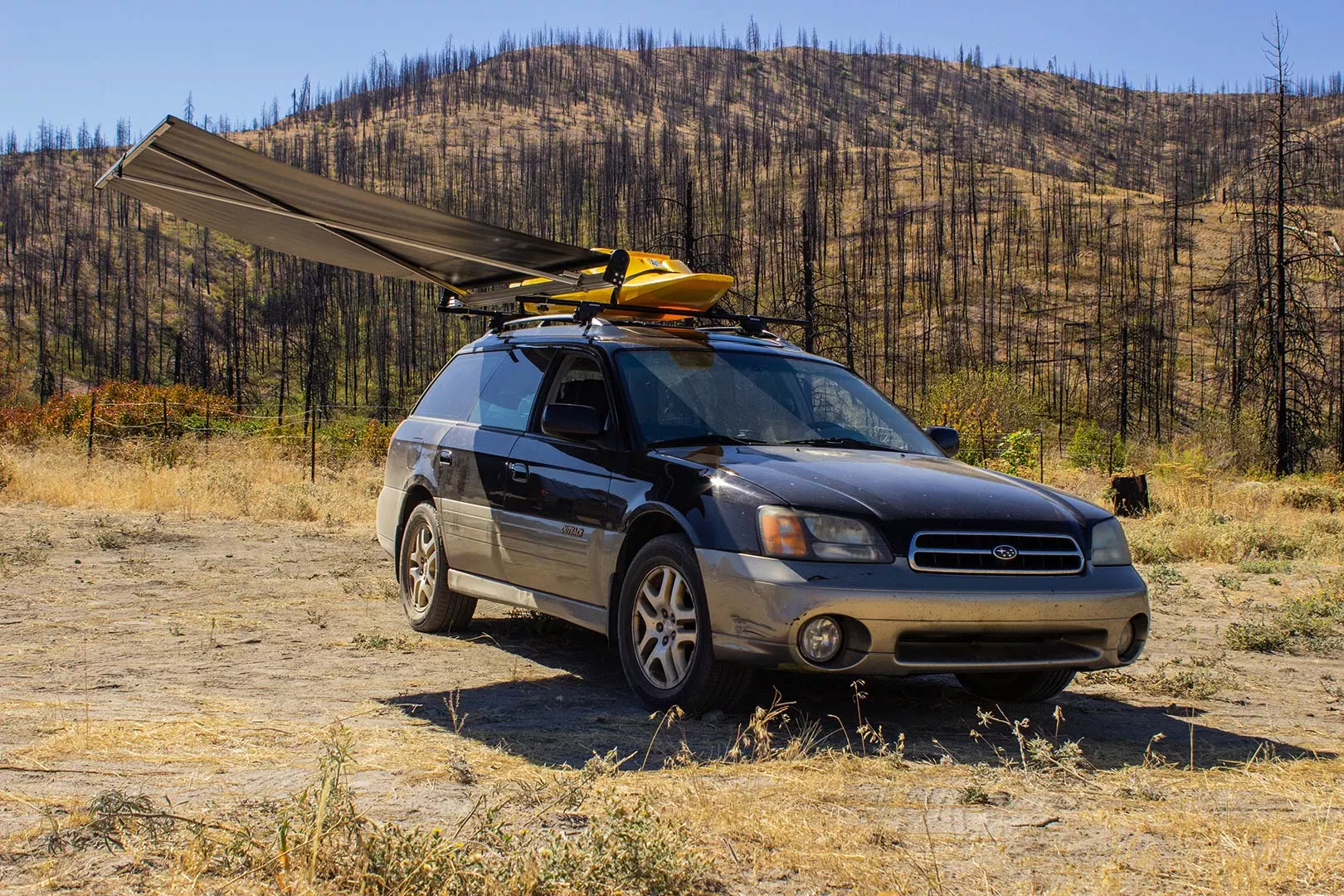Washington's Nomad Awnings has developed a vehicle awning that's as spontaneous and flexible as the nomadic van lifestyle itself. No cranks or legs to mess around with, the awning simply pulls straight out in seconds and throws shade up over the patch of dirt or pavement next to the car. Designed for everything from daylong tailgating, to multi-day camping, to quick pit stops, the Nomad Awning is an intriguing solution for fast, no-fuss sun and weather protection.
Recent years have brought a flood of car awnings to the US market, from overseas overlanding brands like Alu-Cab and Rhino Rack, to established global vehicle accessory brands like Thule and Yakima, to startups like SheltaPod, to cheaper knockoffs. Despite all that competition, the basic rectangular side awning looks much the same from brand to brand – a piece of fabric that slides out and relies on a set of legs and guy lines for support.

Nomad attempts to make the basic side awning a little more flexible, as useful for side-of-the-road pull-offs as wide-open primitive campsites. In place of the perimeter frame common in side awning construction, it uses a collapsible aluminum X-frame designed to support the canopy fabric from underneath. This makes for super-fast, simple setup that merely involves pulling the awning out like you'd do with a basic window shade.
The self-supporting Nomad awning provides a stable roof strong enough to hold up to falling debris – its makers even show it taking on falling rocks. The dry bag-like awning fabric is fully waterproof, providing more robust weather protection beyond just shade.

While the legs of other canopies aren't necessarily difficult or hugely time-consuming to set up, it's not hard to think of scenarios in which a simple two-second slide-out would prove far superior. Park in a small, scenic pullout for lunch and you can be eating in shaded comfort within seconds rather than fiddling around with awning legs. If there's a sudden downpour of rain or snow, you can get some immediate shelter without spending a second more than necessary exposed to the elements.
Of course, legs with tie-downs also lend stability in wind, so when things get gusty, the Nomad awning will undoubtedly start flapping around. To solve this issue, Nomad uses anchor lines that attach to the corners and tighten up via cam locks. So the Nomad Awning is quick and self-supporting in calm weather but still able to hold steady in harsher conditions, like those for which Nomad's Pacific Northwest home is known.

At 25 lb (11.3 kg) for the 5-foot (1.5-m) awning and 29 lb (13.2 kg) for the 7-foot (2.1-m), Nomad's awnings are light enough to be mounted by a single person. They use a basic two-plate mounting bracket with tool-free nuts to quickly mount to roof crossbars.
Nomad is offering its 5-foot awning for a Kickstarter early bird pledge of US$489+, and its 7-footer for $539+. Shipping costs $70 in the US and $100 in Canada, and Nomad also offers free pickup in the Seattle area. The company plans to manufacture the awnings in Washington, and will begin shipping in February 2021 if things play out according to plan.
You can see Nomad's pitch in the minute-long video below.
Source: Nomad Awnings












